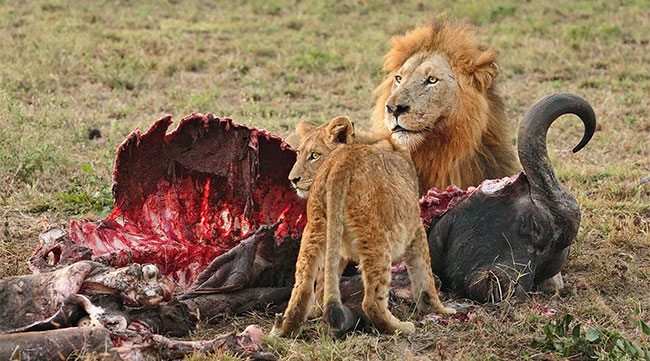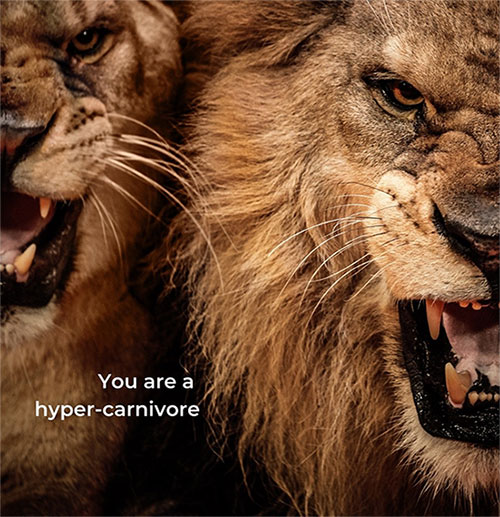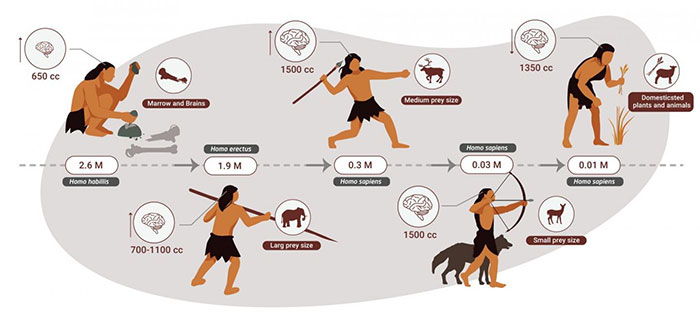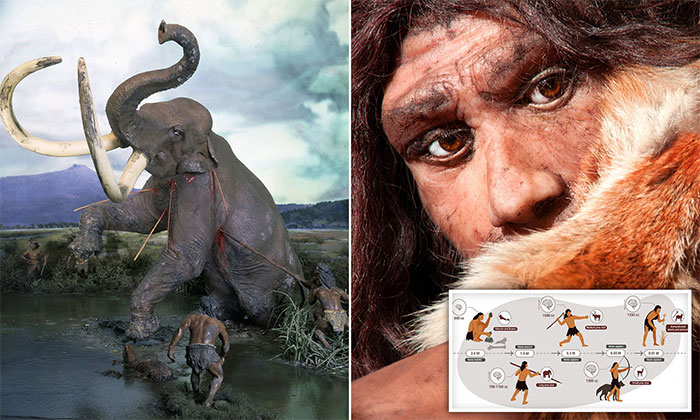Being at the top of the food chain does not necessarily mean that humans are threatened by many other species, but rather that our survival advantage in nature is not about being at the top. Lions, gray wolves, and great white sharks are apex predators. Their diet consists mostly of meat, and these animals have virtually no natural enemies—except for humans. Even though we are the natural enemy of all top predators, does that mean we stand at the top of the food chain?
Before answering this question, we must first understand what determines a species’ position in the food chain.

Lions are one of the top predators.
From an ecological perspective, human position in the food chain does not depend on which animals can prey on us, nor on which animals do not prey on us, but rather on what we eat. Although humans can kill nearly all top predators, based on ecological principles, as long as humans do not eat them and consider them as primary food, we cannot stand above them in the food chain. This is why humans do not sit at the top of the food chain.
The position of a species in the food chain is referred to as trophic level, and generally does not exceed 5 levels. Plants and organisms that can harness energy from nature and produce organic matter occupy the first trophic level. Herbivores occupy the second trophic level. Carnivores that only eat herbivores are at the third trophic level, and so on… If species A eats species B, then the trophic level of species A is one level higher than that of species B. For omnivores, since their food comes from multiple trophic levels, their trophic level needs to be considered collectively. For example, if 50% of an organism’s food comes from plants and 50% from herbivores, its trophic level would be 2.5.
In 2013, scientists from the French Institute for Marine Development (IFREMER) published the trophic level of humans in the Proceedings of the National Academy of Sciences. According to data from the Food and Agriculture Organization of the United Nations, they found that on average, 80% of the calories consumed by a person come from plants and 20% from meat. The corresponding trophic level is 2.21, which lies between anchovies and domesticated pigs. However, worldwide, the trophic levels of humans vary greatly. In 2009, 96.7% of the caloric intake of Burundians came from plant-based foods, resulting in a trophic level of 2.04 for the people of this East African nation. Meanwhile, 50% of the calories consumed by Icelanders come from meat, with a trophic level of about 2.57.

Killing prey and consuming prey are two completely different concepts.
Of course, humans are a threat to other species. Some scientists argue that humans are exerting too much pressure on other species to survive, making us a “super predator.” A 2015 article published in the journal Science compared the hunting efficiency of hunters, fishermen, and other terrestrial and marine animals, discovering that humans hunt 14 times faster than other animals.
However, some scientists disagree with the use of the term “super predator,” believing that this term can be easily confused with “apex predator.” In ecology, a predator has a clear definition: a predator will consume the prey that it kills. Simply put, killing prey and consuming prey are two completely different concepts.
In many cases, our killing of wildlife does not stem from the need to find food for survival. For instance, the main reason for the decline in lion populations is habitat destruction followed by conflict with humans: humans do not want lions to harm them, nor do they want lions to pose a threat to their livestock, so they hunt and kill them. According to a study published in the Journal of Fish and Aquatic Sciences in 2017, offshore fishermen discard 10% to 20% of the fish they catch because it is not the type of seafood they wish to catch. According to the U.S. National Oceanic and Atmospheric Administration, these accidentally caught animals often suffer injuries or death. Therefore, it has been suggested that the term “super consumer” be used instead.

In ancient times, humans almost consumed all the creatures they killed.
However, in ancient times, humans almost consumed all the creatures they killed. Ben-Dor and colleagues examined research on human physiology, genetics, archaeology, and paleontology, and recreated the trophic level of modern human ancestors during the Pleistocene epoch (2.6 million to 11,700 years ago).
They concluded that from over 2 million years ago until the end of the last Ice Age 12,000 years ago, humans could have been apex predators and primarily carnivorous. This research was published in the American Journal of Biological Anthropology. The study believes that the physiological structure of humans is closer to that of carnivores. The acid in our stomach can break down complex proteins and kill harmful bacteria. A higher body fat percentage may also allow us to survive without hunting for a period of time.
Scientists also pointed out that analyzing different nitrogen isotopes in ancient human remains shows that the ratio of certain isotopes increases with increased meat consumption. Compared to those who primarily consume plants, the ratio of these nitrogen isotopes in the nails and hair of ancient humans is higher. Essentially, this is another piece of evidence that ancient humans consumed more meat.
Thus, from ancient times to the present, the position of humans in the food chain has not increased but rather decreased. Ben-Dor and colleagues summarized several reasons. They believe the primary cause is the extinction of large animal species such as the woolly mammoth. At the same time, the development of tool technology allowed humans to process food with more complex means, such as processing rice with stone tools, enabling humans to consume more plant-based foods.
Even if we once consumed meat and had a higher position in the food chain, this does not mean that modern humans hold a higher position in the food chain. However, we can still easily find evidence that we were once apex predators.

From ancient times to now, the position of humans in the food chain has decreased.
On the contrary, the continuous development of human civilization has lowered the trophic level of humans. Hunting cannot feed many people, and the development of agriculture can sustain more individuals. After all, the transfer of energy between trophic levels always comes with significant losses.
Humanity continues to lower its trophic level, even though we no longer stand at the top of the food chain and no longer hold the title of “apex predator,” the result is that all of humanity has achieved remarkable development. After all, what we truly desire is simply to eat and enjoy delicious dishes, rather than to earn the title of “top of the food chain.”


















































